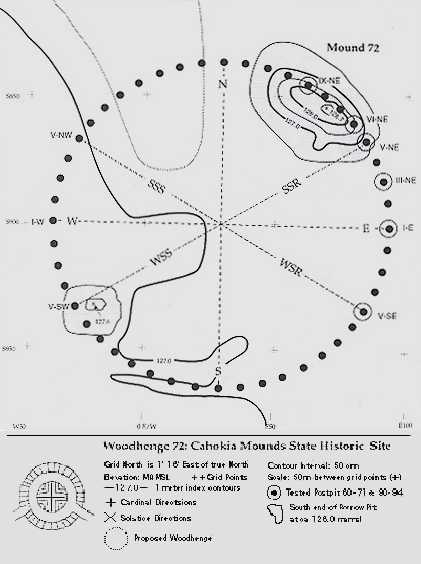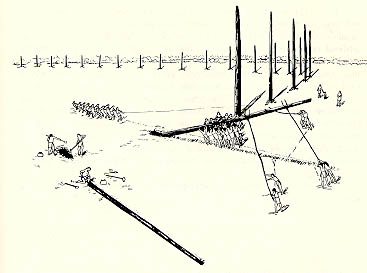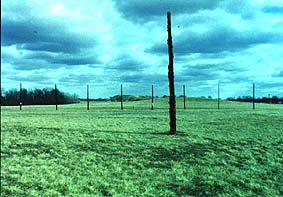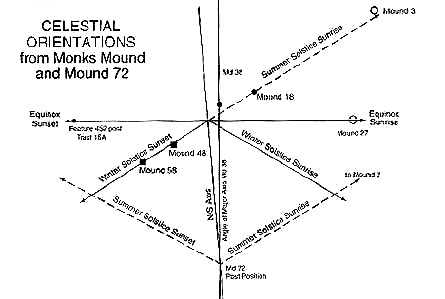
Woodhenge associated with Mound 72, Cahokia.
|
In short, the Mississippian world consists of an upper, lower, and middle world. The classic interpretation is that the cross motif signifies this physical Mississippian world by reference to the cardinal directions. This importance of the cardinal directions is common to many Native American religions. It is no doubt related to changes in the position of the sun, moon, and stars with the cycling of seasons and the passing of years. Like the icons of upper and lower world beings, this existence of a four-cornered world has archaeological roots stretching at least as far back as the Middle Woodland period. Ethnohistoric accounts suggest that the ends of the four cardinal directions at the horizons were anchor points where the three worlds met (Native American folklorist Lankford). At the center of this three-tiered world is the sun.
Archaeological evidence of the ideological importance of the cardinal directions for Mississippian society includes the planned layout of the mounds and plazas at several sites including the Emergent Mississippian Range site and Cahokia, and woodhenges at Cahokia. According to some, even the four-sided geometry of both plazas and mounds symbolizes the four-cornered structure of the Mississippian world (Knight 1989; Emerson 1997).
|



